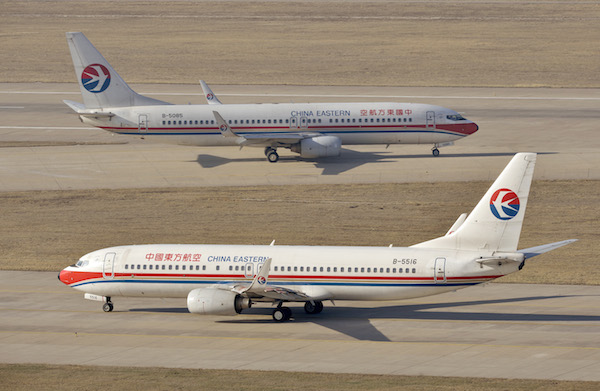China Urgently Needs 500,000 Pilots For Aviation Gold Rush
| Vittorio Hernandez | | Nov 03, 2014 10:52 AM EST |
Over 200 new companies in China are seeking general aviation operating licenses, but the growing number of affluent Chinese means that more locals would want to fly their own jets.
Beijing unveiled the open skies policy in 2010 and is expected to issue detailed implementing guidelines by the end of the year. By 2020, the open skies policy would expand to airspace below 3,000 meters from the 1,000 meters next year.
Like Us on Facebook
The other issue that this situation would need to address urgently is the insufficient number of pilot training schools, with only 12 existing ones that are so full of student pilots. Some foreign air service firms such as Rotor-Lift Aviation of Tasmania are entering into joint venture with their Chinese counterparts to establish a pilot school in Australia with Chinese students as its target market.
Meanwhile, the Aviation Industry Corporation of China, the country's largest jet manufacturer, has purchased a stake at a South African flying institution. Spanish firm Indra Sistemas and Canadian company CAE are teaching flight simulation and training courses in China.
China's Civil Aviation Authority (CAAC) has its training unit, but it only enrolls 100 students a year. Sun Fengwei, deputy chief of the CAAC, said that more young Chinese want to learn how to fly for employment opportunities at general aviation companies. He added that the first batch of students who enrolled at the CAAC pilot school in 2010 own businesses and were interested in getting a private aviator's license.
The high salary of pilots has motivated students like Zong Rui, 28, a former soldier in the People's Liberation Army in Shandong Province, to borrow money to cover the cost of tuition of $81,750 (500,000 yuan). He reckoned that once he gets employed as a pilot, he could repay back the loan in two years, Reuters reports.
Boeing has a lower estimate of 98,000 pilots that China would need in the next 20 years, plus 101,000 maintenance technicians. Across the Asia Pacific region, Boeing estimates that for the same period, the region would need a total of 216,000 pilots and 224,000 maintenance personnel.
The 2014 Boeing Pilot and Technician Outlook report forecasts that until 2033, Asia Pacific would account for 39 percent of total global demand for new commercial airline technicians, higher than Europe and North American combined.
"The Asia Pacific region is seeing tremendous economic growth and is set to become the largest air travel market in the world," stated Boeing Flight Services Director of Customer Group Bob Bellitto.
©2015 Chinatopix All rights reserved. Do not reproduce without permission
EDITOR'S PICKS
-

Did the Trump administration just announce plans for a trade war with ‘hostile’ China and Russia?
-

US Senate passes Taiwan travel bill slammed by China
-

As Yan Sihong’s family grieves, here are other Chinese students who went missing abroad. Some have never been found
-

Beijing blasts Western critics who ‘smear China’ with the term sharp power
-

China Envoy Seeks to Defuse Tensions With U.S. as a Trade War Brews
-

Singapore's Deputy PM Provides Bitcoin Vote of Confidence Amid China's Blanket Bans
-

China warns investors over risks in overseas virtual currency trading
-

Chinese government most trustworthy: survey
-

Kashima Antlers On Course For Back-To-Back Titles
MOST POPULAR
LATEST NEWS
Zhou Yongkang: China's Former Security Chief Sentenced to Life in Prison

China's former Chief of the Ministry of Public Security, Zhou Yongkang, has been given a life sentence after he was found guilty of abusing his office, bribery and deliberately ... Full Article
TRENDING STORY

China Pork Prices Expected to Stabilize As The Supplies Recover

Elephone P9000 Smartphone is now on Sale on Amazon India

There's a Big Chance Cliffhangers Won't Still Be Resolved When Grey's Anatomy Season 13 Returns

Supreme Court Ruled on Samsung vs Apple Dispute for Patent Infringement

Microsoft Surface Pro 5 Rumors and Release Date: What is the Latest?











